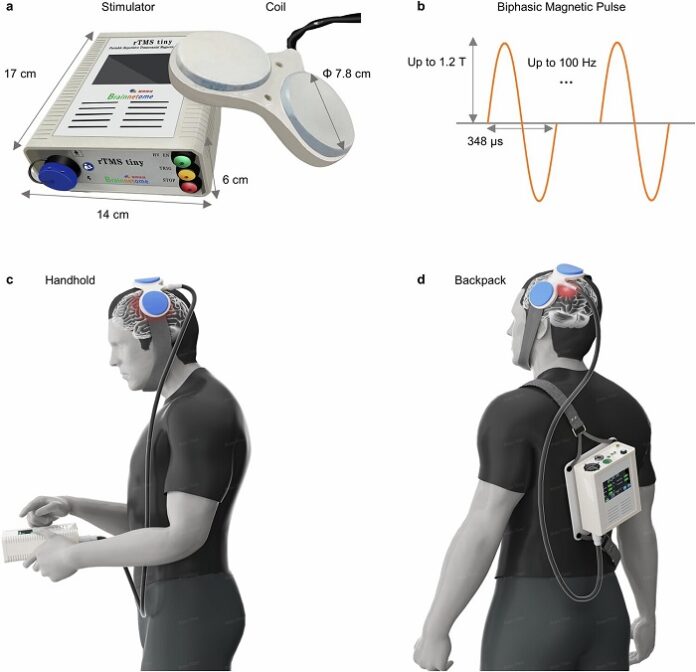

Scientists at the Institute of Automation, Chinese Academy of Sciences, have created a compact, battery-powered brain stimulation device that delivers therapeutic magnetic pulses even while a person walks or performs daily activities.
Advancing Transcranial Magnetic Stimulation
Repetitive transcranial magnetic stimulation (rTMS) is widely used to treat depression, stroke-related motor impairment, and other neuropsychiatric disorders. It also plays a role in cognitive and motor function research. However, existing systems require stationary, high-powered setups, making at-home or on-the-go treatment impractical.
Innovative Wearable Design
Researchers designed a head-mounted coil capable of producing strong magnetic fields using only battery power. Traditional devices rely on grid electricity, generate excessive heat, and are too bulky for mobile applications. To overcome these challenges, the team developed a compact figure-8 coil using specialized magnetic core materials to enhance magnetic fields while minimizing energy consumption.
A lightweight control and power unit, weighing just over a kilogram, was worn on the back using shoulder straps. The system featured a high-power converter that delivered pulses up to 1,600 volts and 500 milliamps using an 18-volt battery. It also recycled energy after each pulse to extend battery life and reduce heat.
Human Trials and Performance Testing
Fifteen healthy adults, aged 25 to 40, participated in human trials. Researchers measured electric field strength, magnetic flux intensity, temperature rise, and repetition rates while comparing results with conventional systems.
Participants received motor cortex stimulation while seated and walking. Motor-evoked potentials recorded from hand and leg muscles confirmed that magnetic pulses effectively reached motor areas. While walking, muscle responses more than doubled in amplitude, proving effective stimulation during movement.
Key Findings and Future Applications
As reported by medicalxpress, the wearable coil generated 1.2 Tesla pulses with a 348-microsecond pulse width, matching commercial systems. It delivered over 8,000 pulses per charge while maintaining safe temperatures. Researchers plan to integrate brain-monitoring systems for real-time feedback, enabling home-based and mobile therapy in the future.






















